
Help us resolve key scientific questions about our majestic oak trees and their futures
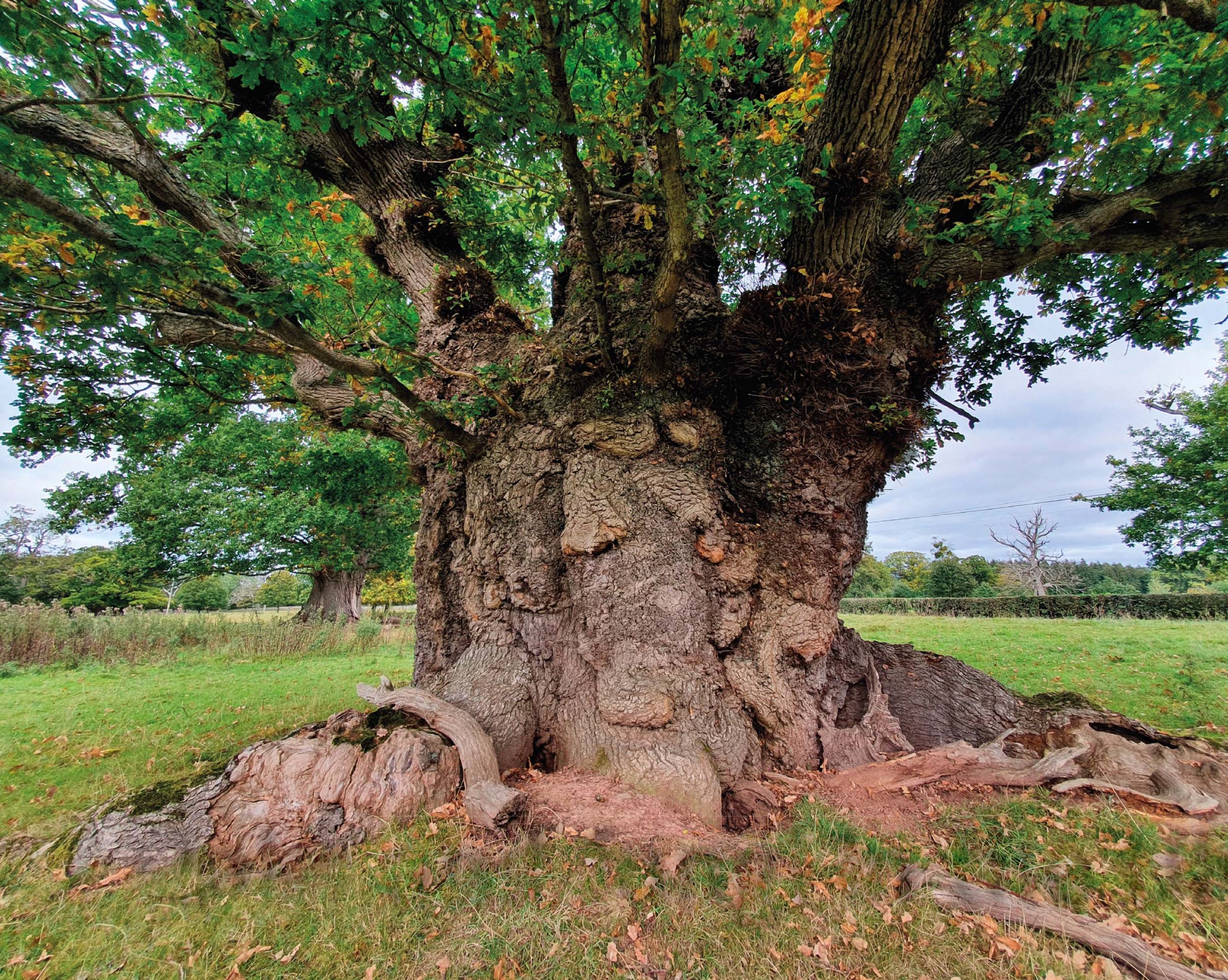
The oaks must be amongst the UK’s most loved trees. Their tangled branches and grand stature have inspired countless poems, folk tales and artworks, making them an iconic part of the British landscape.
Oaks are the second most common broadleaved tree in UK woodlands (with only birch more common) and the most common in openly grown settings, totalling more than 120 million individuals. They can live to over 1000 years, with some of the oldest, such as King Offa’s Oak in Windsor, estimated to be 1300 years old.
Two species of oak are considered native to the UK, Quercus robur (pedunculate oak) and Q. petraea (sessile oak). Q. robur is the more common and widespread of the two species, being especially dominant in the south and east of the British Isles. Q. petraea is mainly found in the west and north. Wherever the two species populations overlap it is also common to find hybrid oaks (Q. × rosacea), which can be more locally common than the parent species in some areas.
The UK has more than 49,000 ancient, veteran and notable oak trees, more than all other European countries combined. These older trees support an incredible diversity of organisms living and/or feeding on or within the trunks, branches, twigs, roots, leaves, flowers and fruits. This makes the UK a hotspot for rare species that thrive within the habitat that these important ancient trees provide.
The UK also hosts the largest concentration of Atlantic oak woodland in Europe, a biodiverse and beautiful habitat found only in small patches of coastal and upland areas. This and other types of temperate rainforests around the world are of global conservation concern.

The history of the medieval British landscape has created conditions that have supported the retention of many ancient oaks, recognised as the most biodiverse microhabitat in the UK, with land management practices such as lowland pasture woodland, deer parks, chases and royal forests all considered to be important contributors. However, land management practices over the last 400 years have lacked the replanting of saplings into these sites to create continuity, and intensified grazing has greatly reduced natural seeding, which has caused substantial gaps in age succession on many of the UK’s important oak sites. As well as having potentially unbridgeable generation gaps, these important habitats are threatened by greatly reduced geographical connectivity and pollution. Oak habitat is in decline globally and, in Europe as well as elsewhere, this is considered to be due to a broad range of anthropogenic and environmental factors that in combination have greatly reduced the area of woodland and the quality of that which remains.
British native oaks are also threatened by a growing number of recently discovered syndromes, discussed later. These include acute oak decline, chronic oak decline and sudden oak death, which have likely been brought into the UK through the global transport of plant material. Oaks are also constantly challenged by the native root pathogens in the genera Armillaria and Gymnopus, and functional leaf loss caused by mildews in the Erysiphales. All of these problems are exacerbated by changes in land use, decreasing habitat and nitrogen deposition.
Despite all of the problems outlined above, we still have an incredible presence of oaks in the UK, and with care and protection we will hopefully continue to be outlived by them far into the future. To try to ensure this, Action Oak was launched in 2018. It is an initiative supported by over 30 UK tree, forest, nature and conservation focused organisations with the collective mission to lead the vital work and research needed to protect our native oak trees and safeguard their future. Action Oak supports current research to record changes in the distribution, age and health of our oak trees, including three projects detailed below, where individuals and communities can get involved and contribute important data and understanding to fill current knowledge gaps.
Oak trees support over 2300 species of birds, bats, bryophytes, lichens and mammals, and over 1000 species of invertebrate. Around 320 of these species are endemic to oak and a further 229 are rarely found on any other trees. Further, numerous fungi and other microbes inhabit living and dead oak tree tissues, though these are only now starting to be revealed.
Most of the known species dependent on oak trees are invertebrates, and a majority of these interact with the fungi in the tree in some way. Many make their homes and find their food where heart-rot decay fungi have been in action, leaving partially decayed material that is physically broken down by insects, creating mounds of composting wood mulch that creates further habitat for other invertebrates. Some ambrosia and bark beetles bring symbiotic fungi into the oak tree with them in specially adapted ‘pockets’ on their bodies, called mycangia. Once they have burrowed under the bark, these beetles deploy the fungus where it starts to grow, creating a food source that the beetle then harvests, leaving patterns of adjoining corridors where the decayed wood has been consumed.
The biodiversity that the fungal decay of oak supports goes beyond these saproxylic invertebrates. The hollows that are created by brown- and white-rot fungi become homes to many insects such as bees and ants, but also to a host of small mammals, bats, owls, and other birds, that make their roosts and nests in these dark crevices. It is this amazing engineering partnership, between a tree and wood-decay fungi, that creates this incredibly rich habitat of hollows.
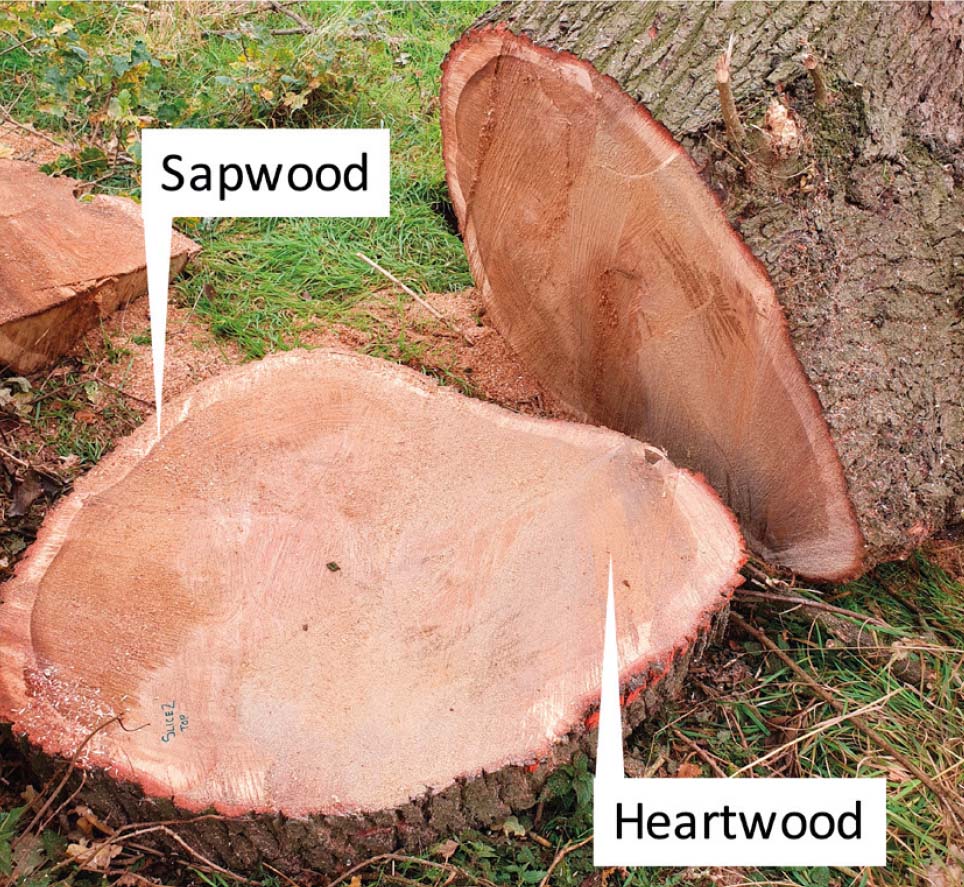



As with all trees, fungi play many essential and formative roles in an oak’s life. These range from mycorrhizal associations with the roots that provide critical nutrients to the tree, through to the powdery mildews that cover, feed on and reduce the productivity of living leaves. In some cases the most visible and certainly the most structurally altering of all the fungal relationships is heart-rot.
Heart-rot, simply put, is the decay of heartwood brought about by fungi and often assisted by other organisms in later stages. Heartwood is the non-functional wood that is formed from sapwood as it senesces. As a tree ages it creates a large central column of heartwood which contains few, if any, living cells.
The heartwood of oak is easily distinguished from the sapwood when looking at a transversely cut slice (Fig. 3). It is darker in colour and contains tannins and other polyphenols, chemicals that are often inhibitory to the growth of many fungi. Heartwood is found in the trunk and larger branches.
Heart-rot at the base of the tree is known as butt rot and that in higher regions is known as top rot. There are two key heart-rotting species in oak: Fistulina hepatica (beefsteak fungus) and Laetiporus sulphureus (chicken-of-the-woods), which can be commonly found growing from the trunks or larger branches (Figs 4 and 5). Both species have distinctive features, which make them relatively easy to identify. L. sulphureus is a bright yellow and orange, fleshy bracket, which resembles foam filler when young and expands into numerous shelves, becoming paler with age. F. hepatica, as the specific name suggests, resembles a liver, with deep brown-red colouring, a firm but fleshy texture, and droplets of red guttation that can form on the outside or can be squeezed as a bloody juice from a sliced fruit body.
It is important to emphasise that most fungal species that cause heart-rot are not pathogens; they are saprotrophs breaking down wood no longer functional in water conduction. This historical misconception has perhaps been brought about through the forestry focus on the loss of usable timber that heart-rotters cause. There are, however, some pathogenic heart-rot fungi, such as some Armillaria species, that do kill living cells as they make their way towards the heartwood. There are also non-pathogenic fungi that can sometimes cause limb loss or other structural issues, such as Laetiporus sulphureus.
Heart-rot fungi over time can spread into large areas of heartwood and, as the wood loses structure through the decay process, can create hollows, eventually leaving only a relatively thin layer of functional sapwood and bark and an empty cavity where the heartwood once was. In extreme cases, like the Lady in Waiting Oak pictured here (Fig. 6), the majority of the heartwood of the trunk can be consumed, and even with some loss of bark and sapwood, the tree can support itself and continue to grow for many years.
Hollowing occurs at different stages in a tree’s life, depending on the species. Less than 1% of Quercus robur trees younger than 100 years old have hollows, 50% have hollows by 200–300 years, and all are hollowing by 400 years. In comparison, 25% of beech trees have heart-rot before they reach 100 years old, at least 50% are hollowing between 100–300 years, and all have hollows by 300 years.
Heart-rot is an important and natural part of the ageing process for the tree. The rotting heartwood, brought about by primary and secondary decay species, releases nutrients which are delivered directly to the roots of the tree, and in some cases aerial roots form on the interior of a developing hollow to gain early access to this private food source. It is as though the tree has been adding into a savings account for later life year on year and the fungi help to unlock those savings.
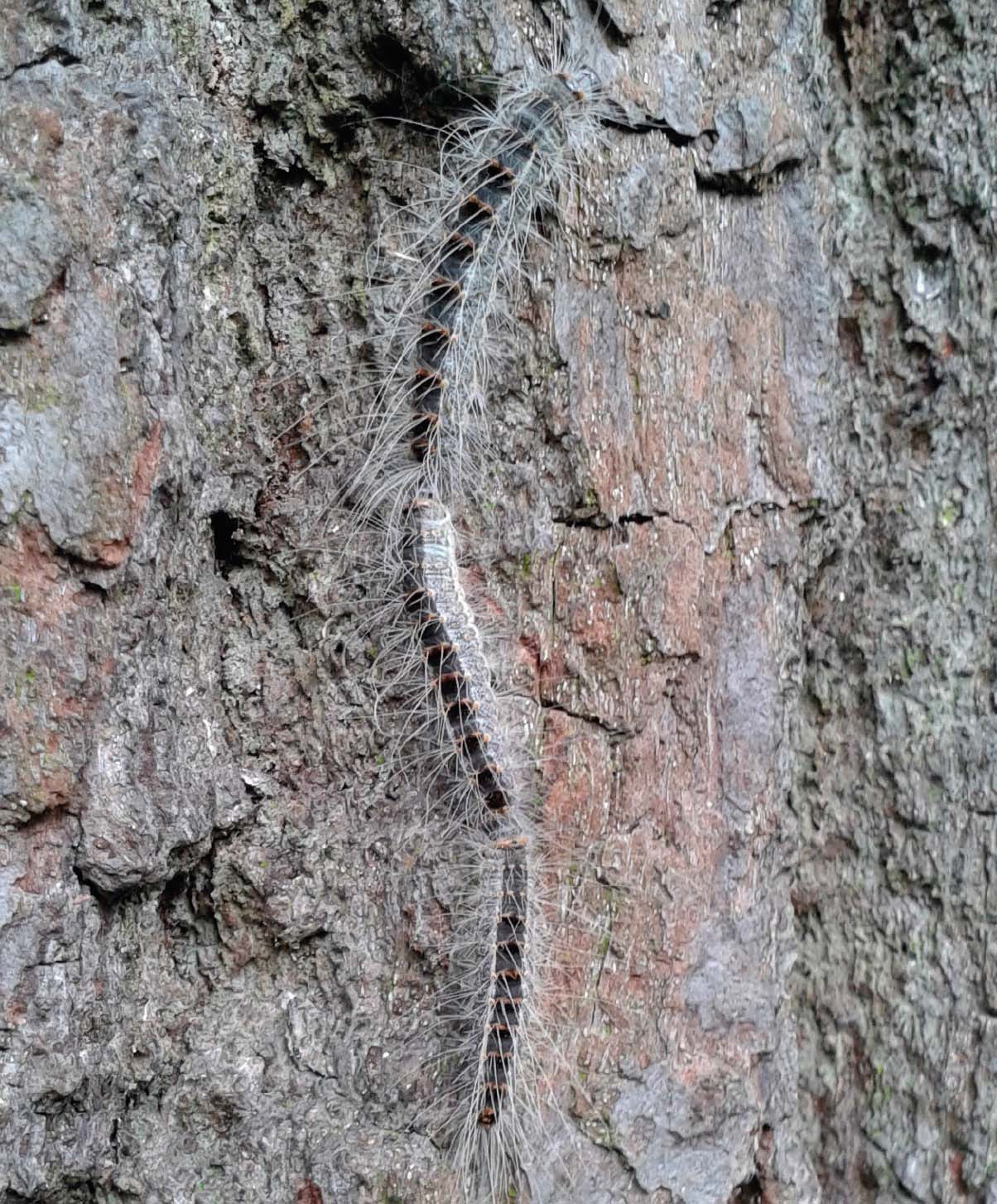
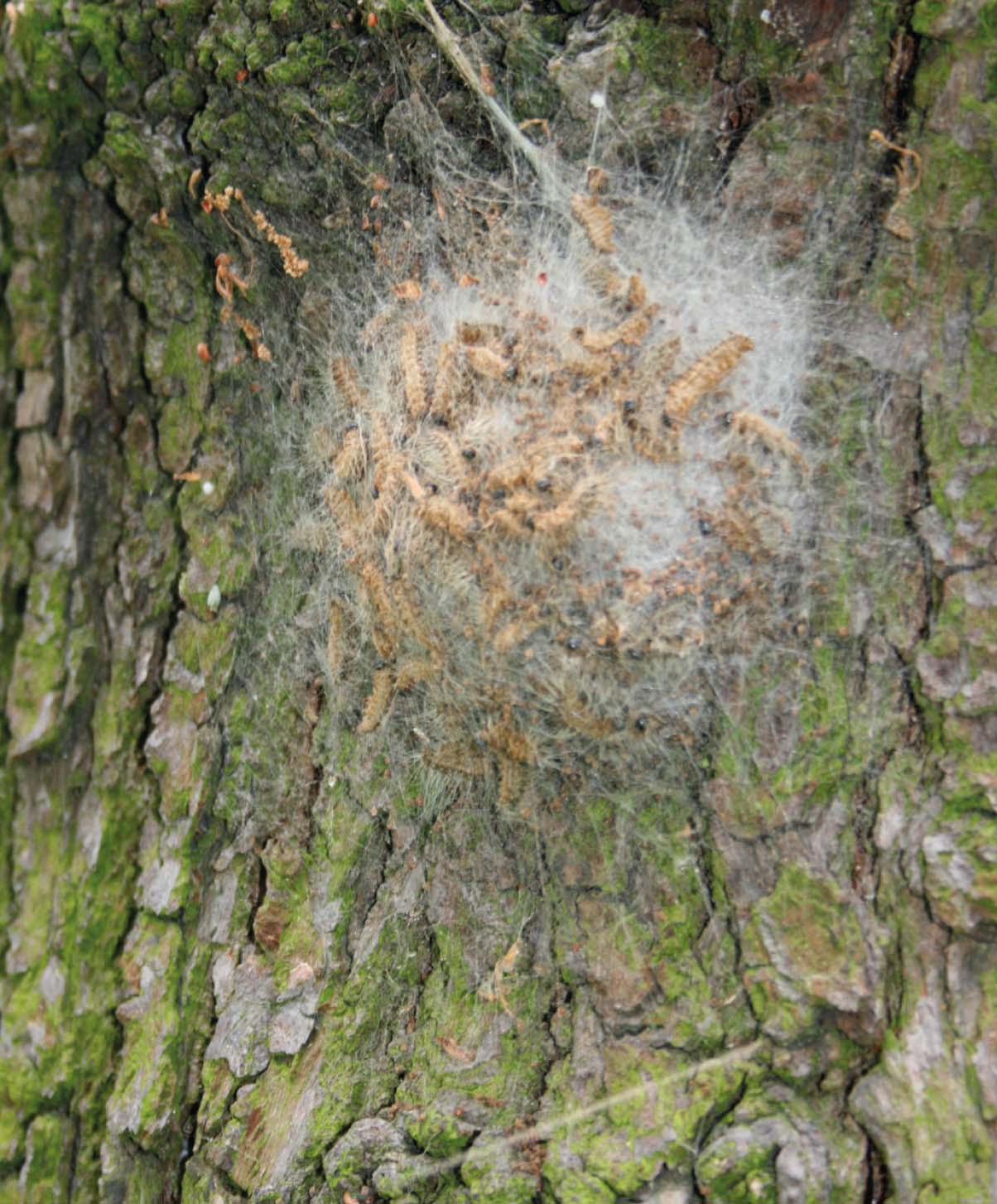
Figure 7: OPM. Late instar caterpillars moving in procession (left) and a nest (right). Nests are made on oak branches and stems and range in size. They are built in early summer from silken webbing and often contain moulted skins. (© Nathan Brown)

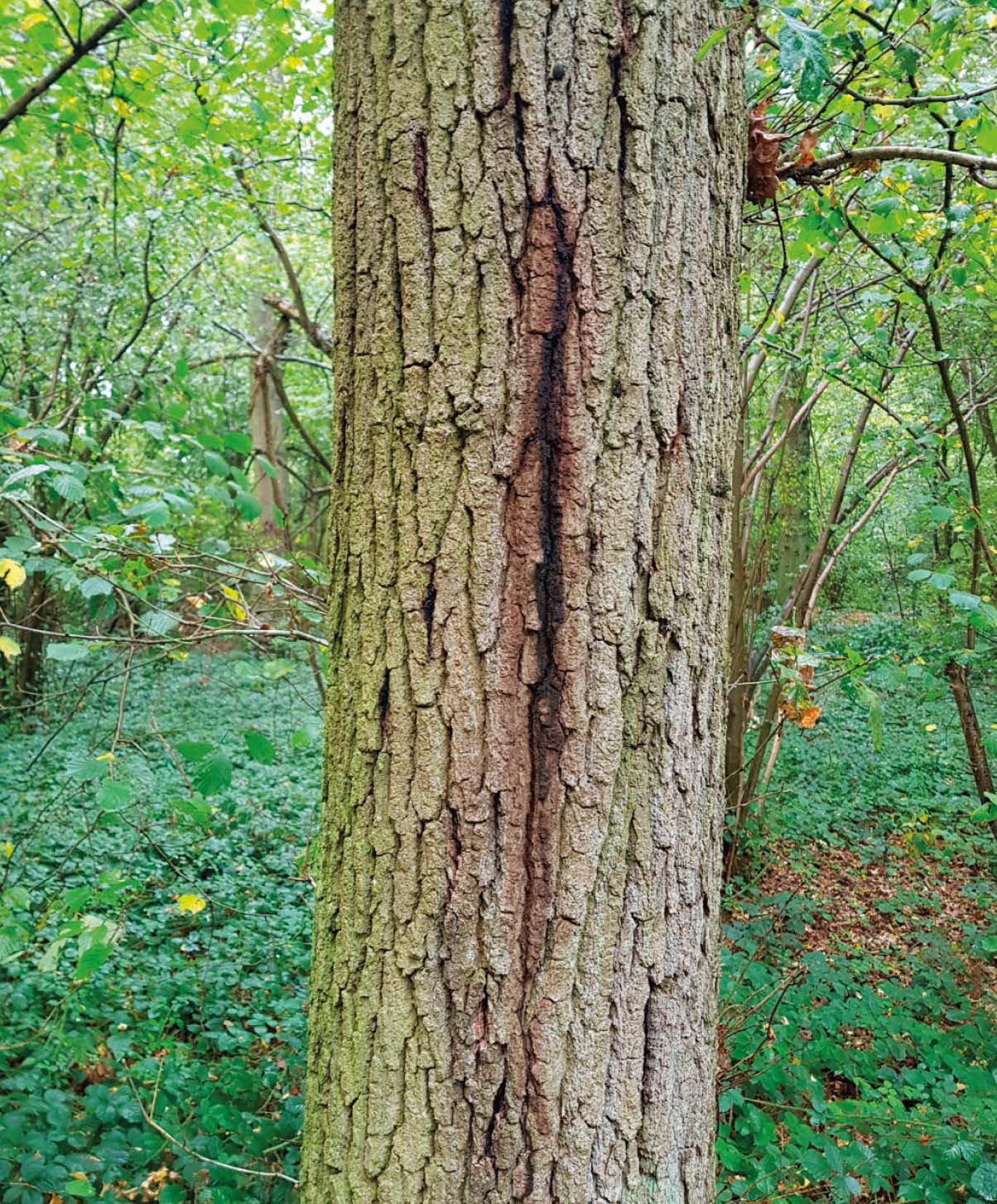
Oak is a resilient species; robur (the Latin name for English oak) is the root (and stem) of the word robust, one of the original definitions of strength. This character likely derives from the properties of its wood but also applies to the trees themselves. Nevertheless, there are a growing number of threats to oak survival, including the changing landscapes and climates in which they are growing, as well as various pests and disease threats.
Britain’s native oak are affected by relatively few introduced species, especially if gall wasps such as Andricus quercuscalicis (cause of the knopper gall) are overlooked because they affect the acorns rather than the health of the tree. Oak powdery mildew (Erysiphe alphitoides) arrived in approximately 1910 and is now widespread. This fungus infects oak leaves and is distinguishable due to the presence of a white felt-like coating on affected leaves before they brown and wither (symptoms become most severe late in the summer). Oak mildew decreases the photosynthetic potential of affected trees and severe and/or repeated years of infection may have long-term impacts on tree health, with seedlings and young trees especially at risk from mildew outbreaks. The impact of mildew is also heightened when oak trees have already been defoliated by insect feeding earlier in the year.
The most notable recent arrival also acts to defoliate native oak. The caterpillars of the oak processionary moth (OPM; Thaumetopoea processionea) feed collectively in oak crowns (Fig. 7). OPM arrived in London between 2005 and 2006. Despite active management campaigns this species is now well established, with a range that expands annually into the surrounding counties. Further introductions have only been detected sporadically outside this area on recently planted material, although 2019 saw a significant upsurge in discoveries and 70 sites were eradicated. As well as tree health impacts, this species is a serious risk to human health, as caterpillars have hairs that cause skin irritation and allergic reactions. Any possible sightings of OPM should be reported to Forest Research using the Tree Alert web page (treealert.forestresearch.gov.uk/).
Of the existing and emerging diseases, oak declines are increasingly reported by tree managers, with their distribution, incidence and severity likely to further increase due to climate change and increasingly disturbed environments. Decline diseases are complex, resulting from the actions of multiple biotic agents acting on a host tree, and their development is influenced strongly by environmental conditions. The different agents may act sequentially or concurrently to reduce host vigour. In simple terms, the onset of decline follows a period where trees have suboptimal growth and their condition is limited by the environment. Soil conditions, nutrient availability, between-tree competition, compaction and root damage can all play an important role in the early stage of decline, but drought is the most common ‘predisposition’ factor. Hosts that have been weakened by the actions of predisposing factors then become susceptible to various biotic ‘contributing’ factors which further reduce vigour and may ultimately cause the tree to die.

Oak decline is a broad term applied to various poor-health conditions of oak. Historically this has been used as an all-encompassing term to cover many signs of ill health on oak trees. Recently attempts have been made to focus in on specific sets of conditions within the broader topic of oak decline. The rate at which host health is reduced has been used as a first division to separate causal pathways and broadly this corresponds to agents that affect different parts of the tree. Chronic oak decline (COD) describes a slow-acting process covering decades where the trees health gradually reduces. COD is most commonly linked to the actions of fungal pathogens that degrade live root tissue; Armillaria species and Gymnopus fusipes (Fig. 8) are the species most frequently isolated from decaying oak roots in the UK. In contrast, acute oak decline (AOD) causes a fast reduction in tree health acting over years rather than decades.
In the UK, an emerging form of acute oak decline affects the main stems of oak trees (Fig. 9). On the outer bark, black, vertically arranged, weeping stem lesions and, in at least one third of cases, the D-shaped exit holes of the adult native two-spotted oak buprestid Agrilus biguttatus (Fig. 10) are distinguishing features. In the inner bark, larval galleries and bacterial lesions are visible close to the cambium. The degradation of live bark tissue has been attributed to a bacterial pathobiome (multiple bacterial species that act together to hasten tissue decay). Three species of bacteria play key roles in stem decay, primarily Brenneria goodwinii, which is supported by Gibbsiella quercinecans and Rahnella victoriana. These species become especially active in the galleries of A. biguttatus and a link between the beetle and the pathobiome is currently being investigated.
AOD-affected trees are found in southern England, from the East Anglian coast to the Welsh borders, and no further north than southern Yorkshire or the edge of Lancashire. AOD has strong links to environmental predisposition: it occurs in areas with low rainfall, high temperatures and where deposition of nitrogen oxides is high. It is therefore likely that these factors are crucial in the initial weakening of the trees, and this is an active area of current research, along with interactions between AOD and COD (which can both be found on the same trees). Reassuringly, trees with AOD stem lesions do not always die; in fact up to 40% of monitored trees produce callus tissue over the decay and enter remission. The number of trees that recover varies between years, which indicates that weather patterns (particularly periods of drought, which may limit recovery) affect the predisposition of oak trees. Monitoring the underlying health of the nation’s oak trees is therefore a crucial step in understanding the drivers of predisposition and decline.

The health of trees is reflected in their crowns. The number of leaves they have on their branches influences the amount of energy they can capture through photosynthesis. By monitoring crown condition, we gain an insight into the underlying health status of oak, which in turn can help reveal long-term trends and the potential impact of environmental factors that may act to predispose trees to decline. Oak crown condition is monitored by Forest Research at 85 plots across Great Britain. These plots provide vital historical context; they were established in 1989 when concerns about pollutant deposition and acid rain were prominent. However, it is unclear how representative they are of the nation’s oaks more generally. All plots are in oak-dominated woodland and this means that trees outside woodland are not well represented at all. Trees in the wider treescape are likely to have several additional factors that may impact their health, for example: soil compaction from humans and animals; the impacts of agriculture through ploughing and application of fertiliser; as well as exposure to higher temperatures and wind speeds.
Collaborative work between researchers from Aberystwyth University and Forest Research, funded by Woodland Heritage and Defra, has highlighted the importance of crown condition assessment in determining the severity of decline in oak trees. Index measures have been developed to describe quantitatively the severity of oak decline and to differentiate between the acute and chronic oak decline syndromes (AOD and COD). These indexes are based on a comprehensive set of visual assessments that include aspects of tree size, crown condition and the presence of disease-causing organisms.
The first of these index measures is the Phenotypic Decline Index (PDI) which providesa measure of overall decline severity with a score between 0 and 1. Oak trees with a score closer to 1 have severe oak decline symptoms. The second index measure is the Decline Acuteness Index (DAI) which provides a quantitative measure to differentiate between AOD and COD syndromes with a score between -1 and 1. Trees with scores above zero have symptoms more typical of AOD and trees with scores below zero have symptoms more typical of COD. These index measures are showcased in a web application available at jasenfinch.shinyapps.io/decliner/ (Fig. 11). This allows the user to adjust the values of the visual descriptors to determine the index values and the oak decline severity/type.
The index measures provide a standardised means to enable the monitoring and comparison of change in the visual health of oak populations across both the landscape and growing seasons. This is of growing importance with climate change and a greater need for the assessment of the health of the UK’s oak population.
The BAC-STOP project is currently exploring the potential for volunteer groups to monitor their local trees and provide vital information to address existing gaps in oak condition monitoring. The first year of the project focused on method development. The initial workshops were online and relied on images of trees from Google Street View to underpin the training. However, in September 2021 we were finally able to get out into the field (Fig. 12) to hold in person training and see the trees themselves! Thank you to all the volunteers who gave their time to help our project.
We are currently in a strong position for 2022: we have a reliable method, training materials and recording systems and now we are ready to expand the scope of the project. We hope to work with groups at five sites in the coming year and we plan to use a mixture of all the methods trailed so far. We ask volunteers to attend a one-hour webinar, which will be followed by a half-day training workshop in the field. This should provide all the information and tools required for further monitoring and enable individuals to observe the trees that are most significant to them and provide data that can be integrated with an established monitoring program. One of our key aims is to instil an interest in observing change in the natural environment, as well as generating some useful data for research.
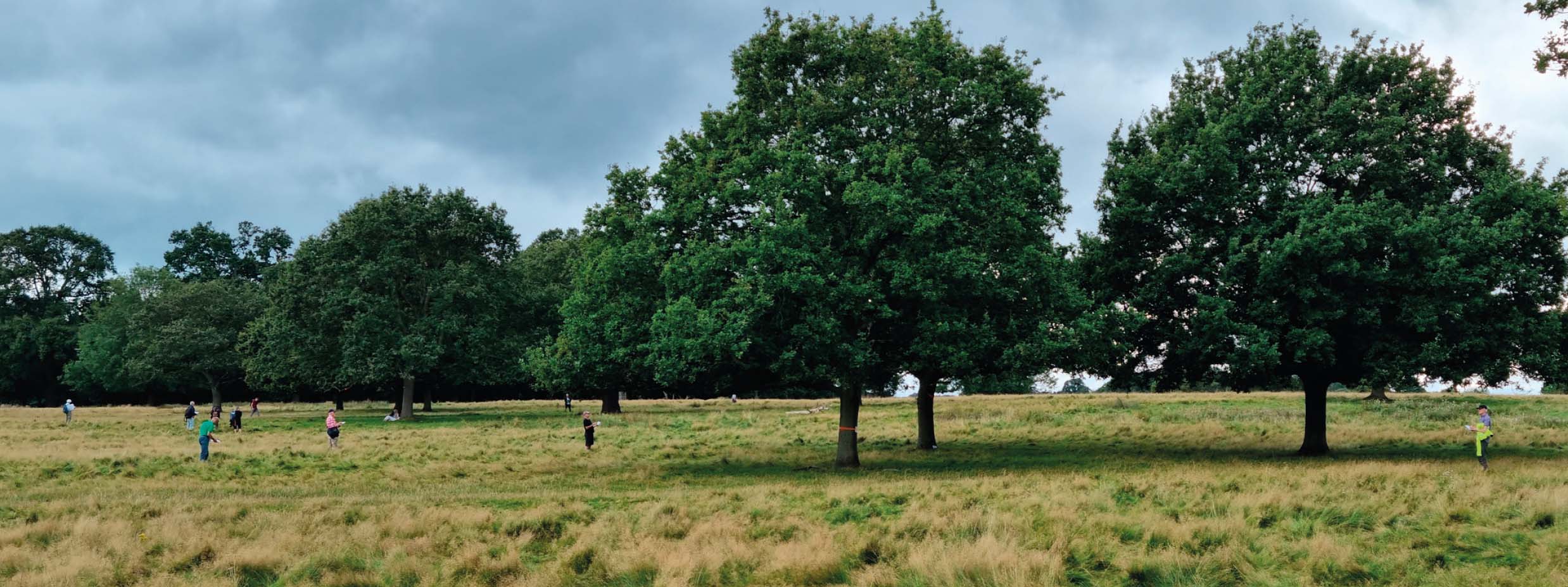

There are many unknowns and questions that need to be answered when looking at oak heart-rot, and a vast array of species may now rely on our knowledge of this key habitat. To improve our understanding, we are currently carrying out a range of studies that will hopefully shed some light on those relationships and the structure of these fungal communities. Alongside direct sampling, culturing and environmental DNA techniques, we are also collecting fungal observation data and surveying the condition of the oak trees that support them, to help answer questions. This part of the project has been launched as a community science project – something that anyone with access to a smartphone or desktop computer can get involved with. The survey has been developed on the ArcGIS Survey123 platform, which offers useful integration with mobile devices, including GPS location, taking photos straight into the app and other features. It operates on any Android or iOS device and is available for PC and Mac as well. It can also be used in any browser, although this lacks some user functionality. We need volunteers from all over the country to record for us. Anyone who can tell a chicken-of-the-woods from a beefsteak fungus can help. All we ask is that you are very careful in your identification before submitting a record.
If you would like to give the app a try or find out more information you can visit our website for the project at www.foreverfungi.co.uk/oakfungisurvey/, which contains lots of detail about how to use the app and identify key fungi and tree features, further links and an introductory video that explains more about the project’s aims. You can also use this QR code to visit the project website and download the app and survey.

Learning to use the app with confidence and how to submit good records will take a few survey submissions. We hope that we have made the app self-explanatory, and for those parts that require additional assistance, the guidebook, website and project Facebook group will offer the answers.
The project is intended to run until 2023, providing us with an up-to-date snapshot of the status of oak-associated fungi and the trees themselves. The large amount of potential data that we hope will be kindly provided by the community would take an impossible amount of time for a small research team to acquire. So, your contribution can really make a difference to this research and our knowledge of these fantastic trees and their fungi. We are aiming for a big push in 2022, hoping to spread the app into the hands of recorders and those who work with trees. There will be a run of training webinars and field events announced later this spring.
These important scientific enquiries and the resulting conservation actions are entirely reliant on volunteer contributions of data from people who share the belief that our trees and the myriad species that inhabit them are worth protecting and understanding in greater depth. As researchers, it means a great deal to have input from community recorders who are geographically spread around the country and have local knowledge of their areas and the trees there.
If you have a love of trees, a little time, and access to a smartphone or a computer, please check out our projects or pass on the details to your local groups. Huge thanks to all those involved!

Rich Wright is a PhD student at Cardiff University, researching the fungal communities that are associated with oak heart-rot. The project is funded by KESS2 and supported by the Welsh Government, the Royal Forestry Society and Action Oak. He works part time at Royal Botanic Gardens Kew as an outreach officer for the fungal tree of life projects.

Jasen Finch is a postdoctoral research plant scientist at Aberystwyth University. He uses metabolobics and machine learning to reveal the chemical changes occurring in plants during disease and disease restistance, work funded by the Future Oak and BAC-STOP projects.

Nathan Brown has a joint appointment between Woodland Heritage and Rothamsted Research and works on models of plant disease including on oak and ash trees.
The Future Oak and BAC-STOP projects are funded by the Biotechnology and Biological Sciences Research Council (BBSRC), the Department for Environment, Food and Rural Affairs (Defra), the Natural Environment Research Council (NERC) and the Scottish Government.
This article was taken from Issue 197 Summer 2022 of the ARB Magazine, which is available to view free to members by simply logging in to the website and viewing your profile area.